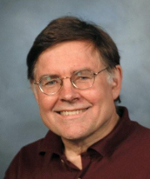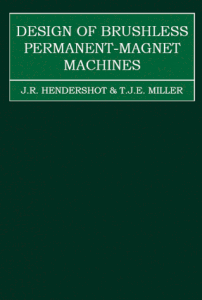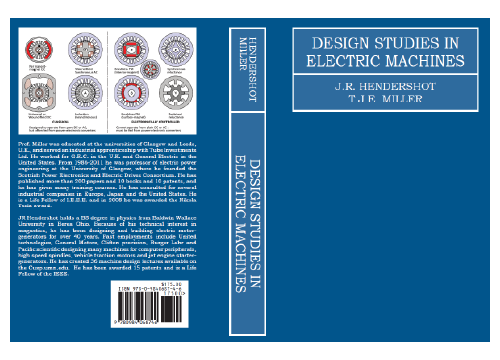An engineer’s diary
-
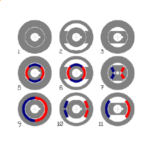
[No. 16] Four rules of saliency
We often hear the terms "salient-pole" or "non-salient-pole" in relation to electric machines."Saliency" is the idea of "projecting beyond the general outline", and it refers to t…
-
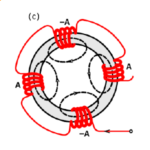
[No. 9] Can a magnetic circuit work without air ?
Recently the U.K. Magnetics Society sent a list of 10 questions for their magazine MagNews, in which the first question was “What is your favourite magnetic material?” In a hurry…
-
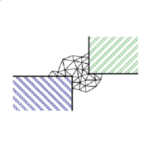
[No. 11] What is the finite-element method?
The idea in the finite-element method is to divide a difficult problem into a number of simpler problems which can be solved simultaneously; the solution to the difficult problem…
-

[No. 20] Equipotentials
Sometimes I wonder why we don’t see equipotentials in finite-element flux-plots. Strictly speaking, at least in 2D flux-plots, we generally do see them because the flux-lines…
-
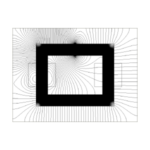
[No. 57] L and Linkage and Leakage
Readers may have noticed that Engineer’s Diary has been trying to follow the alphabet in selecting monthly topics, and some letters provide more ideas than others. This month, ‘L’…
-
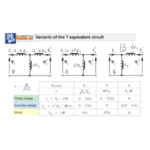
[No. 59] Mutual inductance
Mutual inductance M is one of the most common concepts in electromagnetic engineering. Indeed we can argue that it is also one of the most fundamental concepts.
-

[No. 18] Is it time to celebrate?
In Finite Elements in Electrical and Magnetic Field Problems, edited by M.V.K. Chari and P.P. Silvester, (Wiley, 1980, ISBN 0 471 27578 6), A.L. Frisiani, G. Molinari and A. Vivia…
-
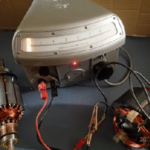
[No. 1] When is a fluxmeter not a fluxmeter?
A fluxmeter is an integrating voltmeter. It never measures flux directly. It measures flux-linkage, the integral of voltage with respect to time. It is true that flux can be estim…
-
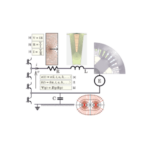
[No. 62] OK — the laws of Ohm and Kirchhoff
OK — We’ve reached letter ‘O’ in the alphabetic sequence of Diary topics, and Ohm’s law immediately comes to mind. When I was a student, one of my room-mates (a medical student) h…
-
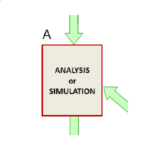
[No. 2] ABC of engineering calculations today
Most engineering calculations take the path of analysis or simulation, shown in Fig. 1, A. Analysis has been established for a long time; but simulation is more recent, especially…
-
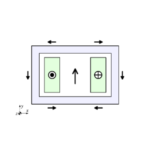
[No. 64] Eddy-currents
Eddy-currents flow in closed loops. It follows that for any physical device in which eddy-currents arise, only a three-dimensional analysis can be complete. Any two-dimensional an…
-
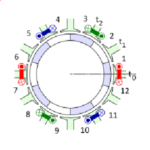
[No. 3] Görges diagram
The polygonal diagram of H. Görges (Das Görgessche Durchflutungspolygon) dates from 1907. Although it is highly developed in German literature, until recently it has been rare in …
-
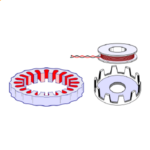
[No. 4] The Historic Claw-Pole Machine
My grandson is interested in mathematics and history. Maybe it is an unusual combination, but both these subjects are helpful in looking forwards as well as backwards. In engineer…
-
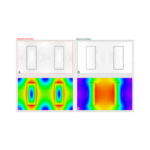
[No. 61] Nervous about Neumann?
Continuing the more-or-less alphabetic sequence of initial letters for the titles of Engineer’s Diary, we arrive at the letter N. What topic could be more relevant in finite-eleme…
-
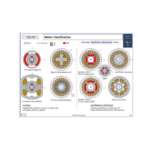
[No. 63] Oh no! No magnets!
Scarcity is nothing new in human history, and in electrical products we hear about it all the time in relation to lithium or rare earths, or even copper. So the poem might seem li…
-
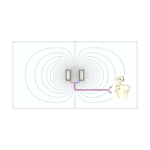
[No. 65] Inductance
Inductance may come as a shock to anyone who thinks that V = I × R. That delightfully simple expression of Ohm’s law is not the whole story. For sure, if we have a coil connected …

